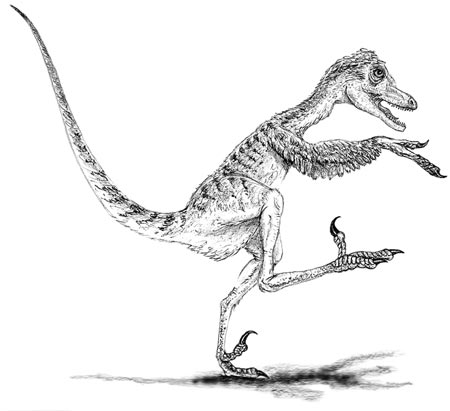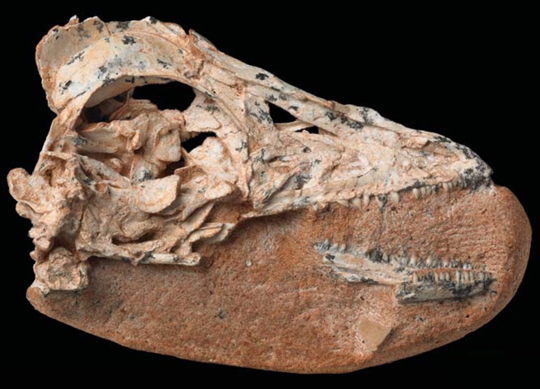New Troodontid Dinosaur Described
Almas ukhaa – Named after the Legendary Asian Bigfoot
A team of international scientists, including Dr Mark Norell (Curator of Palaeontology at the American Museum of Natural History, New York) and Professor Xing Xu (Chinese Academy of Sciences), have announced the discovery of a new species of Late Cretaceous troodontid dinosaur from Mongolia. This small, carnivorous dinosaur (it was probably less than a metre long), has been named Almas ukhaa, after the mythical Bigfoot-type ape that, according to some cryptozoologists, is believed to roam the more remote parts of Central Asia.
An Illustration of the New Troodontid Dinosaur A. ukhaa

Picture credit: Everything Dinosaur
From the Famous Djadokhta Formation
The fossil material which consists of an almost complete and articulated skull with an associated lower jaw and a substantial part of the postcranial skeleton, comes from the Ukhaa Tolgod region of the Gobi Desert, an area regarded as one of the richest concentrations of Cretaceous fossil vertebrates known to science. Since this location was first mapped in 1993, numerous dinosaur skeletons have been found, including a nesting Oviraptor as well as several examples of Late Cretaceous mammals. The rocks in this area form part of the Djadokhta Formation.
The Skull and Jaws of the Newly Described Late Cretaceous Troodontid Almas ukhaa
Picture credit: The American Museum of Natural History
Compared to other troodontids from Asia and North America, A. ukhaa had a relatively short snout. The orbit is quite large, and these fossils could represent a juvenile, but if this turns out to be the remains of an adult animal, then this large eye-socket could indicate an adaptation to hunting in low light, perhaps Almas ukhaa was an elusive animal rarely seen in daylight, similar to the legendary Alma after which, this troodontid dinosaur is named.
Ukhaa Tolgod Sandstone Deposits
The sandstone deposits of Ukhaa Tolgod date from approximately 80 million years ago, (Campanian faunal stage of the Late Cretaceous). The highly fossiliferous site was discovered by a joint American/Mongolian expedition in 1993. Almas ukhaa (pronounced Al-mass ook-uh) is unlikely to be the last dinosaur found in this area. The fossils show a number of autapomorphies (unique characteristics), that distinguish this southern Mongolian troodontid from other Asian members of the Troodontidae. For example, the ischium (part of the hip girdle), has a distinct spike-like process and unlike other troodontids, the front part of the lower jaw lacks a lateral groove.
The scientific paper: “Osteology of a New Late Cretaceous Troodontid Specimen from Ukhaa Tolgod, Ömnögovi Aimag, Mongolia.”
Visit the Everything Dinosaur website: Everything Dinosaur.


